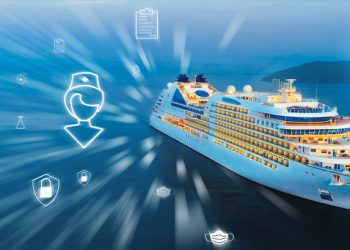Not passing too close to islands or shorelines, or entering delicate areas such as the Venice lagoon

Italian environmentalists and some politicians are demanding that big cruise ships be banned from passing too close to islands or shorelines, or entering delicate areas such as the Venice lagoon.
Prosecutors say Francesco Schettino, the captain of the Concordia, steered the ship to within 150 metres of the shore of the island of Giglio on the night of January 13, to make a “salute” to the islanders, who included a retired admiral, and give the passengers a close-up view.
The giant ship, a floating pleasure palace of bars, spas, state rooms and tennis courts, capsized after striking a rock as dinner was being served.
“I hope there will be no more ‘salutes’, either on the island of Giglio or any other island by any captain,” lawmaker Mario Valducci told the lower house of parliament during a special session on the tragedy, which has so far left 11 people dead and some 20 missing.
“Human lives and what tourism and shipbuilding bring to our economy are worth much more than any ‘salute’ by any captain in Italy,” he said.
Pictures published by Italian newspapers have shown that the massive ship and others just as large regularly come very close to shorelines or jetties elsewhere in the Mediterranean, including the island of Procida, off the Amalfi coast, and Sicily.
Cosimo Nicastri, a Coast Guard official in Rome, told La Repubblica newspaper there was “no specific ban” on cruise ships approaching shorelines or islands to do the “salutes”, but “general norms” about keeping a safe distance exist, and Schettino violated them.
The owners of the 114,500-tonne vessel – the biggest passenger ship ever wrecked and twice the tonnage of the Titanic – accused the captain of causing the disaster by sharply deviating from the charted course.
SPECIAL SHIPPING LANES
The deputy transport minister, Mario Ciaccia, told parliament the government was considering a law to impose special shipping lanes on cruise ships.
Environment Minister Corrado Clini said what happened at Giglio showed that “salutes” where ships approach islands or the mainland were “a ritual that can no longer be tolerated”.
“You don’t have to be a Nobel prize winner to understand that a ship of that size should stay far from the coast,” Clini said earlier this week.
The disaster has put the spotlight on the Venice lagoon, perhaps Italy’s most delicate maritime area, which big cruise ships enter to drop off passengers conveniently close to the historic centre and the Grand Canal.
“We have been saying for as long as I can remember that an environmental disaster here would mean the death of the lagoon,” said Lidia Fersuoch, head of the Venice branch of Italia Nostra (Our Italy), the country’s leading conservation group.
“We want big ships totally banned from the lagoon,” she told Reuters, adding that the giant ships’ wake damages buildings in the lagoon city, a UNESCO World Heritage site.
“Why did we need a tragedy like the Costa Concordia to get people to think about Venice again?” she said.
Fersuoch found comfort from centre-right parliamentarian Valducci, who told fellow legislators at the special hearing:
“Even though it may be nice for cruise passengers, we cannot let these mega-ships pass by St Mark’s Square. So far we’ve been lucky, but we can no longer let them invade and destroy a pearl of international culture.”
Source: Reuters





























































